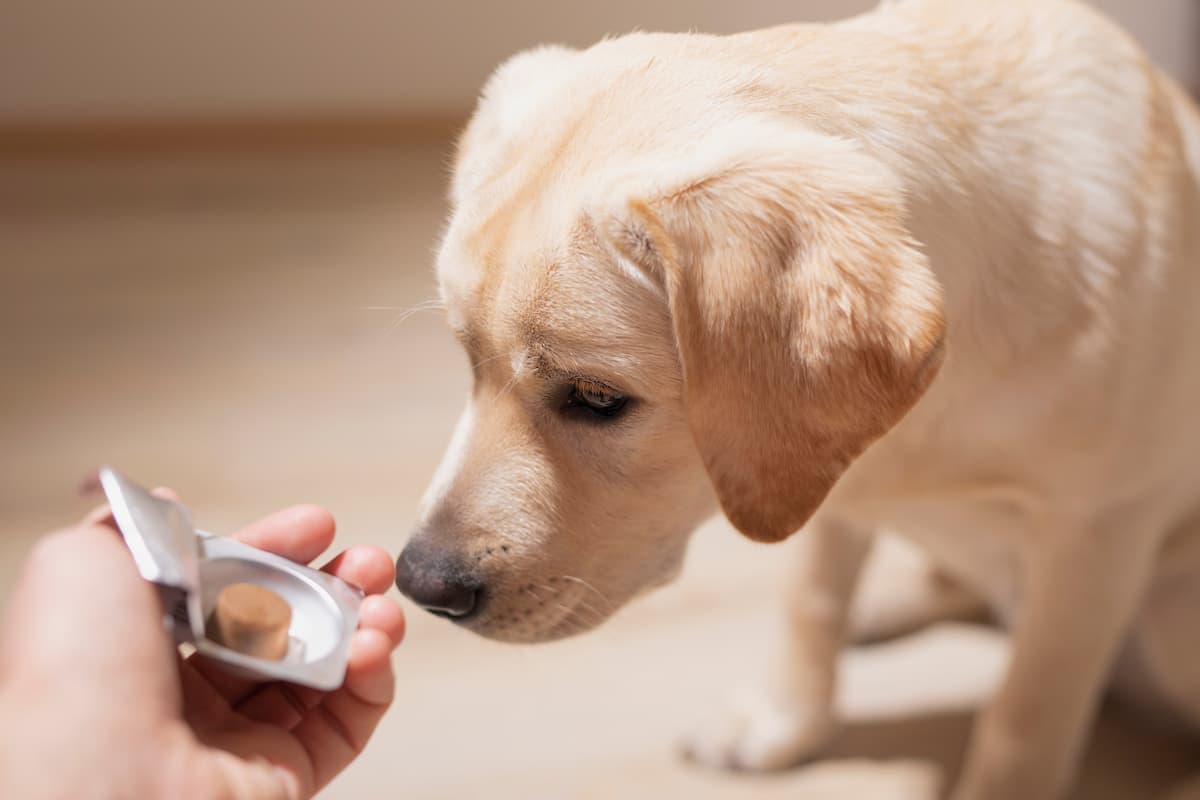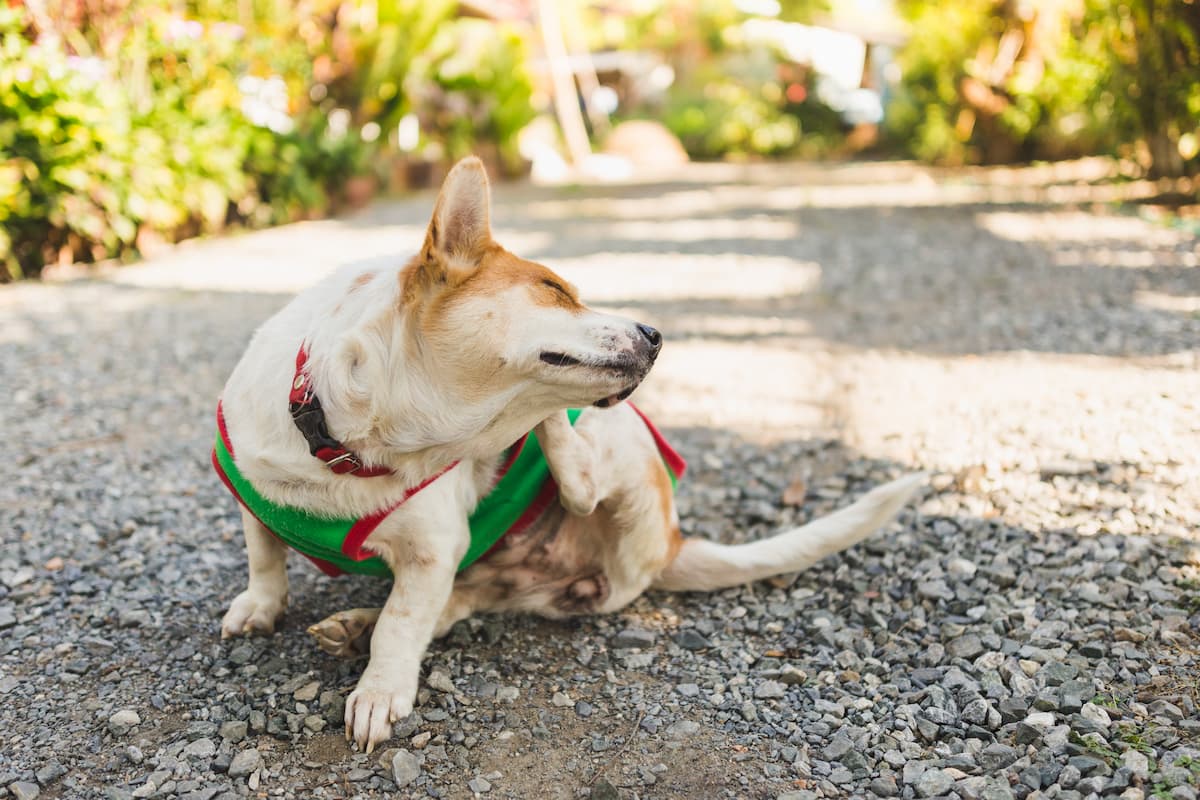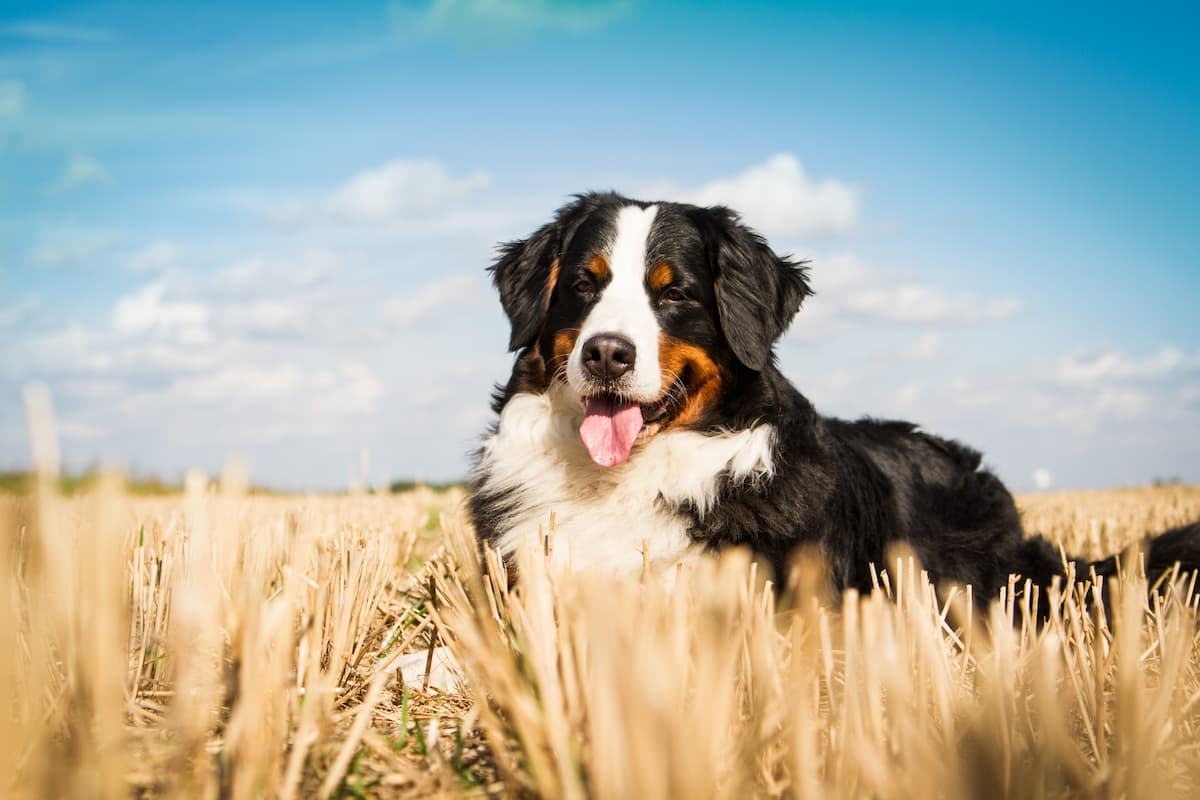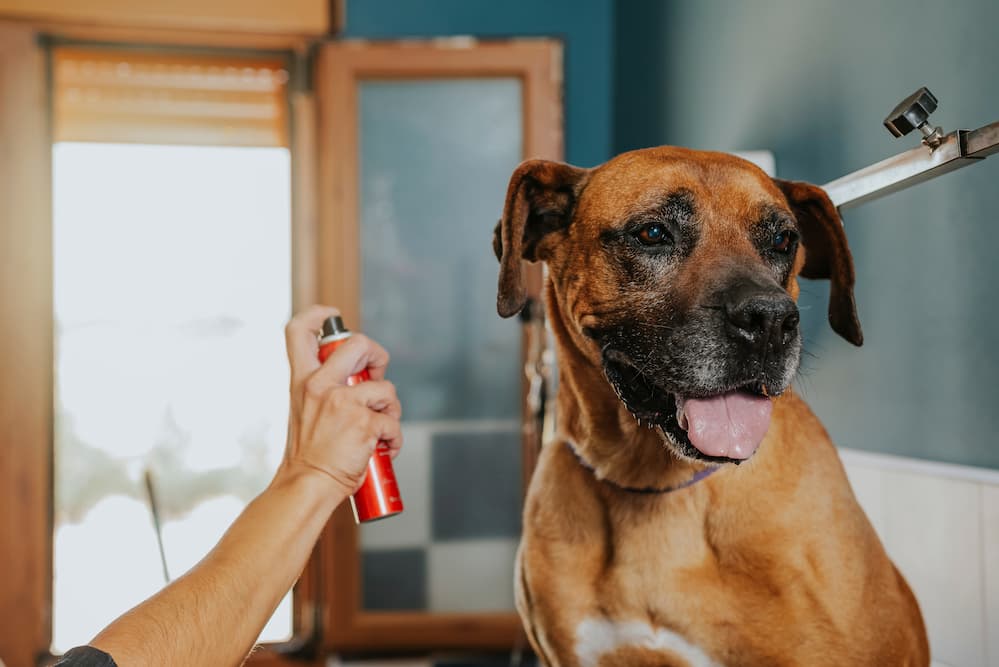The Ultimate Guide to Taking a Road Trip With Your Dog
Published on July 20, 2020
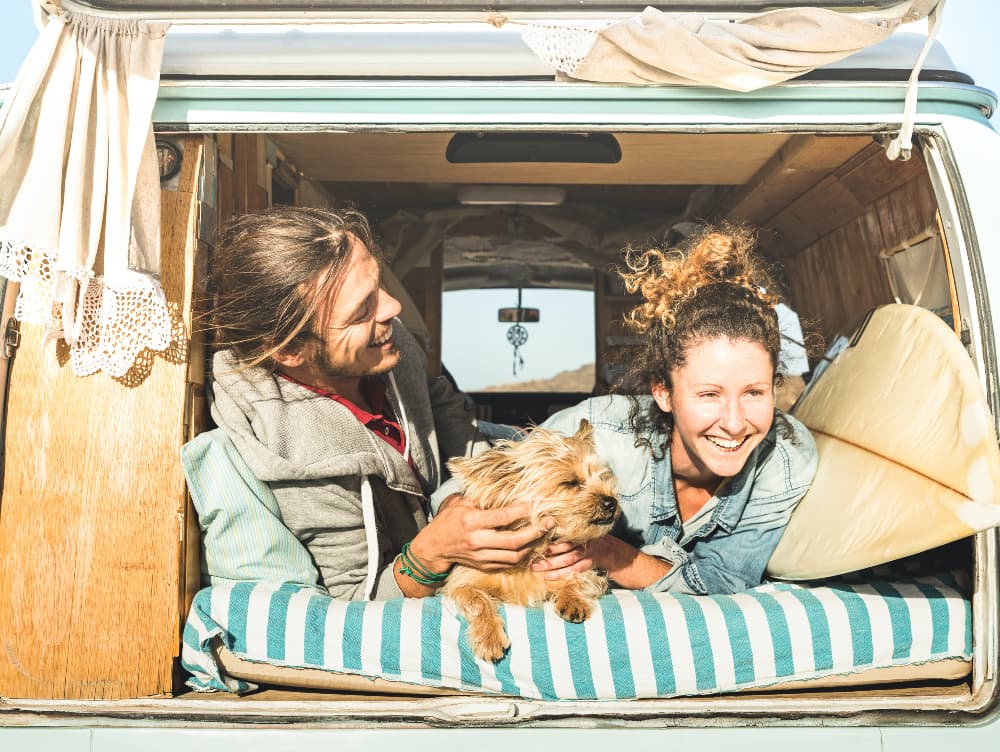
If you’ve ever wanted to take an epic road trip with your dog, there is no better time than the present. After being cooped up for months to prevent the spread of COVID-19, you are probably eager to hit the open road.
Road trips allow the freedom to enjoy the great outdoors with all family members, without having to leave your pup behind. And your dog will be all the more happy to sniff new scents and frolic alongside you in new places.
To help you prepare for a smooth and memorable dog-friendly road trip, here are tips to ensure that your pet stays safe, healthy, and happy on the road.
Benefits of Road Trips: The Perfect Way to Travel With Dogs
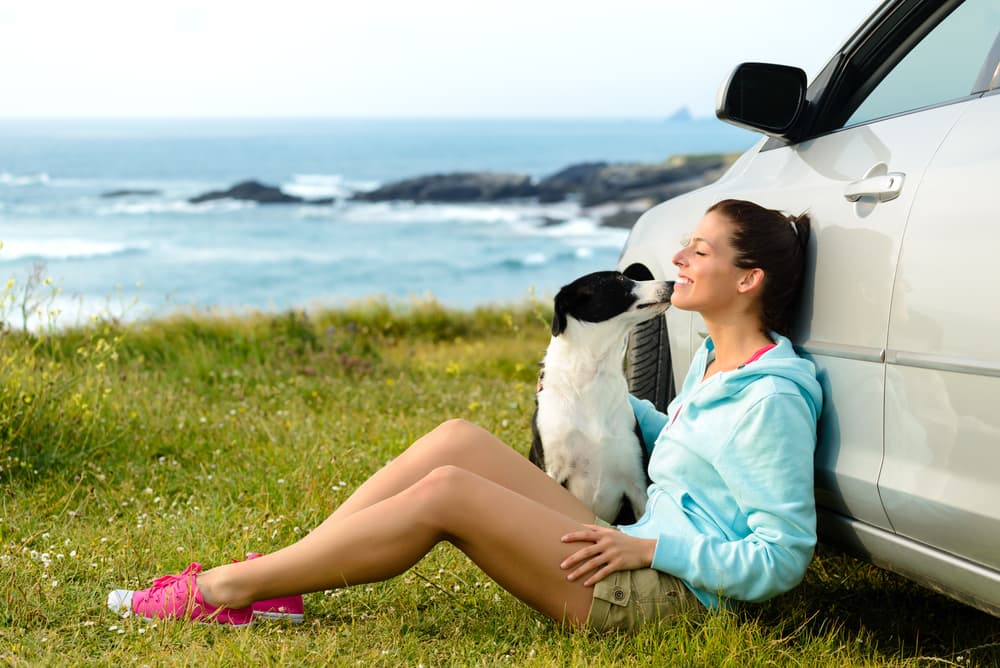
Road trips are a wonderful way to travel with dogs and strengthen your human-canine connection. Best of all, there is no need to worry about getting on a plane during a pandemic, or researching an air carrier’s safety record or requirements.
Traveling by car (or RV or van) means your furry friend doesn’t have to be boarded or left behind with a dogsitter. You can make the most of your vacation while practicing physical distancing and have a grand adventure with your pooch.
One of the biggest benefits of a road trip with dogs is the flexibility it affords—stop whenever you want and select dog-friendly spots to experience. Bring along your pet’s favorite toys and treats as well as a bed or blankets in the trunk without having to worry about luggage limits.
Dog Road Trip Basics: Essentials to Bring
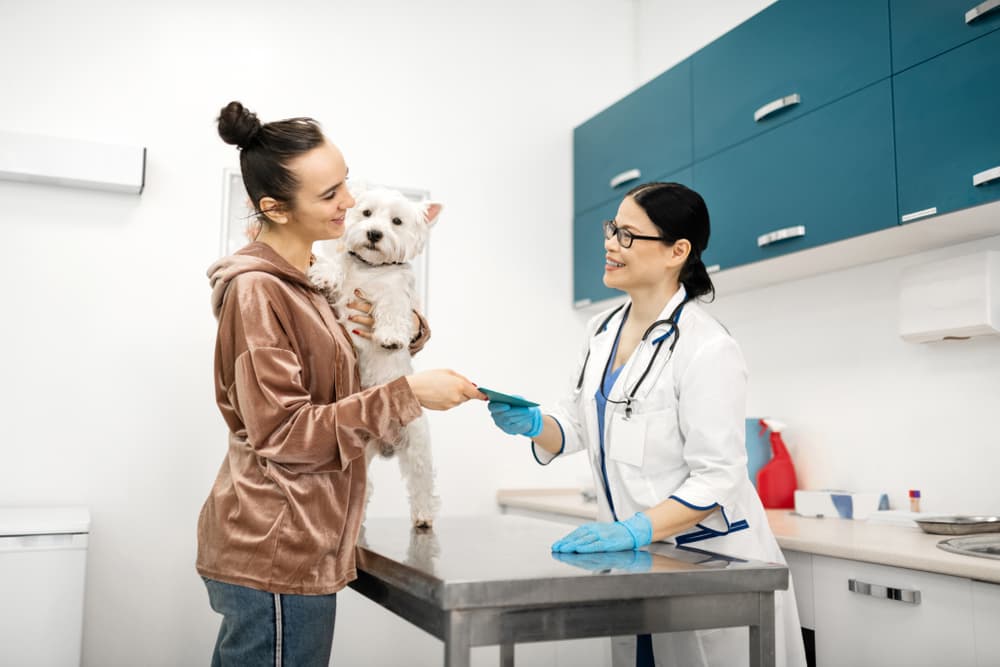
If you’re going to be hitting the road with your canine family member, there are a couple of essentials that you need to bring along. Here’s what you shouldn’t leave home without.
Medical Records/Health Certificate
Whether it’s a weekend getaway or a cross-country trip with your dog, book an appointment with your pet’s veterinarian to get your dog up-to-date on his vaccinations. Carry both electronic and paper copies of his medical record or a recently obtained health certificate from the veterinarian, especially when you are crossing state borders. A health certificate is valid for up to 30 days. Having medical documentation will also become crucial if you run into an emergency while on the road.
Food and Medication
Pack your dog’s food, medication, and supplements for the duration of the trip and bring an additional week’s worth of these items to be prepared for unexpected delays. Feed your dog at least three to four hours prior to leaving to avoid any accidents in the car.
Johnna Devereaux, clinical pet nutritionist and the director of nutrition and wellness for Bow Wow Labs, recommends pet parents bring their dog’s own food on the road. “This will help avoid the potential for an upset stomach and the possibility of loose stool, especially if stores where you are going don’t carry the food you feed.”
If your dog has a tendency to get motion sick in the car, Devereaux says ginger can assuage his tummy. “This potent plant helps with all forms of nausea and may make your trip easier on the whole family.” You can purchase pet-friendly ginger chews online or at your local pet store.
Microchip, GPS Collar, and Identification
It’s one thing if your dog goes missing in your neighborhood…and another thing entirely if you and your pet get separated while road tripping in unfamiliar territory. To improve your odds of reuniting with a dog who’s taken an unplanned detour, at a bare minimum, ensure your contact information is clearly legible on your dog’s ID tag. And if your road-trip buddy hasn’t been microchipped, consider having one implanted prior to your departure.
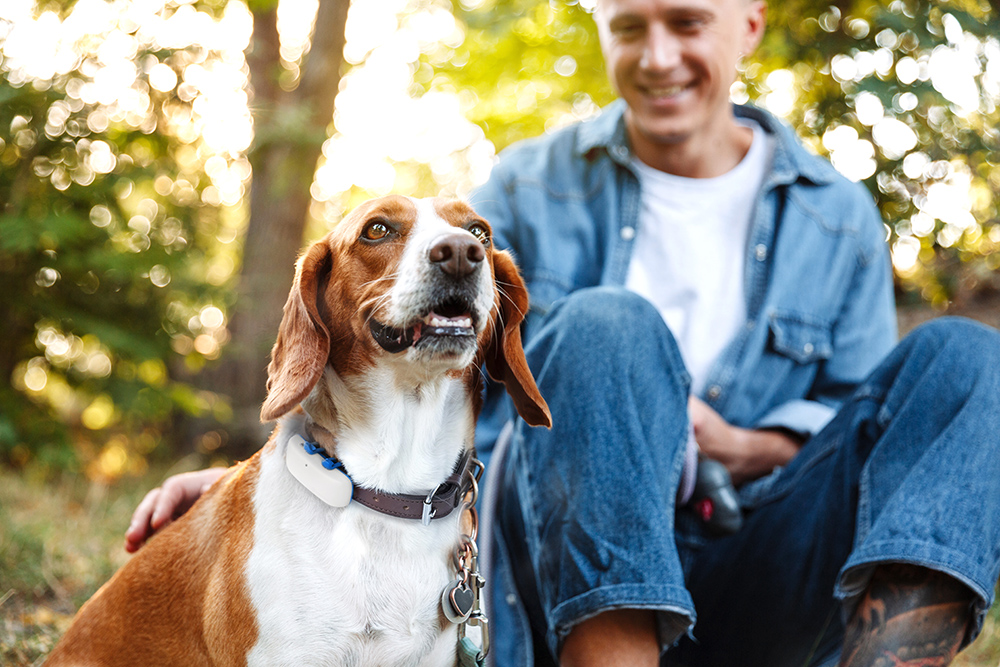
But even if your dog is properly tagged, chipped, and your registry info is up-to-date, a location tracking device or collar, like the Tractive GPS Dog Tracker, can be a literal lifesaver on the road. With Tractive, there’s no need to wait and hope that someone finds your dog if they go missing. The waterproof, clip-on GPS tracker provides real-time tracking info to help you reunite with a lost pet quickly. Plus, you can also use the powerful location and activity monitoring features to keep tabs on your pup while on the beach, during hikes, and wherever you may roam.
Updated Pictures of Your Dog
No one wants to think about losing their pet while on vacation, but accidents can happen. Don’t leave home without some current pictures of your pup. Print a few out and have some on your phone in case you need to show local shelters or get flyers made.
Dog First Aid Kit
Pack a pet first aid kit to treat minor nicks, remove ticks and foxtails, and wrap any injuries. Make a list of clinics and hospitals located along the way and at your final destination, and add the ASPCA Pet Poison Helpline number (888-426-4435) to the list in case your dog ingests a toxin. If you are concerned about a lack of access to veterinarians, sign up for telehealth services for healthcare advice and live triage support while on the road.
Dog Road Trip Packing List

In addition to the essentials listed above, make sure to pack items that will keep your dog comfortable, entertained, and happy along the way. We recommend you include the following items for road tripping with your canine bestie:
- Plenty of water for the car ride and rest stops
- Food and water bowls
- Crash-tested safety harness seat belt
- Long and short leashes
- Travel crate or carrier
- Bed and/or blanket (to offer a sense of home in unfamiliar situations)
- Treat and puzzle toys, treats
- Life jacket, if you are planning water activities
- An extra collar with ID tags
- Booties, if you are visiting a destination with hot temperatures to provide protection from hot surfaces
- Coat, if you are bound for cooler weather
- Poop bags
- Old towels and grooming supplies for cleaning
- Calming aids and supplements (if needed)
Road Trip Safety for You and Your Dog
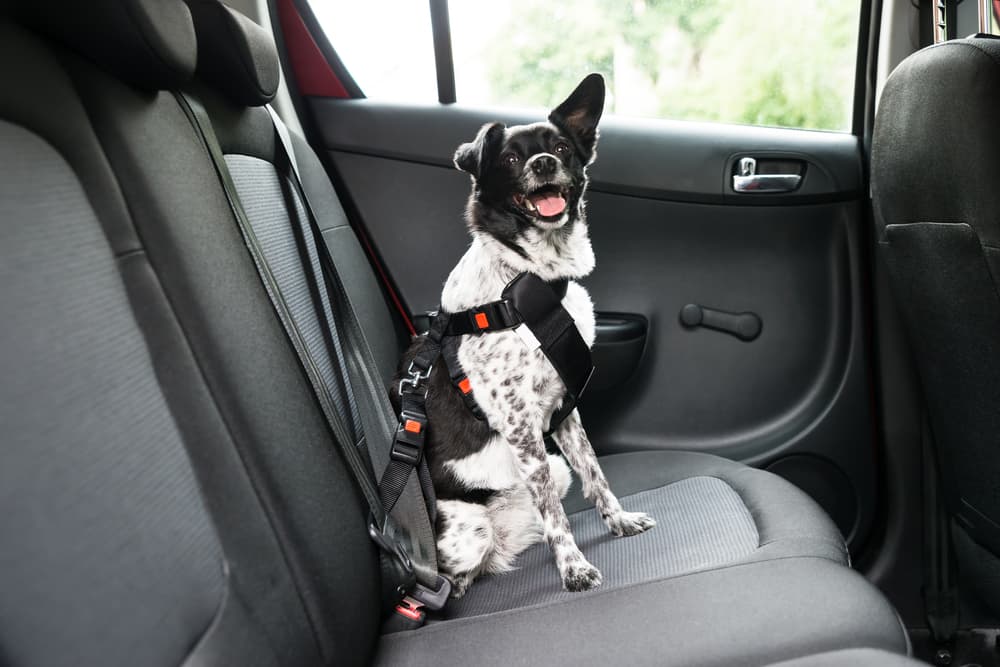
To ensure that you and your dog experience the pure joy of life on the road, it’s essential to follow safety protocols to protect your pet. Follow the below advice to make sure your dog stays safe.
Keep Dogs Crated or Restrained While Driving
It’s pure joy seeing your tail-wagger enjoying fresh air and new scents from the open window, but an unsecured pooch can be dangerous in an accident, or during a hard turn or sudden stop.
Michelle Belio, head trainer and owner at Pawsitively Waggin’ Academy LLC serving New York City and Long Island, recommends the use of a crate that has been crash tested for road trips. “If conditioned correctly, a crate could be a safe space for a dog, which is awesome for the road,” she says. “It also keeps our dogs safe and away from us, to pay attention to the road.”
Travel crates come in different sizes and materials. Select a crate that’s big enough for your dog to stand up and turn around in, and make sure it’s firmly attached to the vehicle floor or the back seat.
For your anxiety-prone dog, use a crate designed for separation anxiety, or cover it with a blanket to provide a calming, den-like environment. If crating is not an option, secure your dog with a crash-tested safety harness and seat belt. The harness goes around the dog’s chest and the attached strap plugs into the seat belt buckle.
For dogs who have trouble relaxing when restrained, use a guard attached to the floor in the trunk/boot of the car or install a back-seat barrier to create a safe section in the back of the car. A dog sling or hammock in the back provides added security and keeps any messes off of the seat. If you are driving an RV, make sure your pet is within your eyesight to ensure he’s still safely secured.
Leash Rules
Remove your dog’s regular leash once in the car, so that he doesn’t get tangled or get whiplash from the collar. When letting the dog out of the car, leash him back up to prevent him from taking off on his own. “Never allow your pet to jump out of the car without a leash,” says Devereaux. “If something were to startle them, you would have no control over where they go.”
Never Leave Your Dog Unattended in the Car
Pets left in cars are at high risk of heat-related illnesses or even death. Temperatures inside vehicles can rise almost 20 degrees within the first 10 minutes, even with the windows cracked open. When driving in warm weather, keep your pet comfortable by using the air conditioner or have the fan running.
Keep Safe Distance from Wildlife
When you are visiting areas brimming with wildlife, maintain a safe distance from animals and keep your dog on a leash or in a designated closed off area (or a collapsible pen) to prevent any stressful situations or encounters that could result in injuries or bites. If an attack happens, seek medical attention immediately.
Practice Social Distancing and Follow CDC Guidelines
Keep at least six feet of distance from others at gas stations, campsites, and on hikes to prevent COVID-19. Avoid dog parks, as they tend to be highly frequented. Wear a cloth face covering if you can’t maintain distance in public and keep a supply bag with disinfectant, gloves, and wipes. Properly dispose of PPE after use.
Dog Road Trip Tips: How to Make the Most of Your Journey
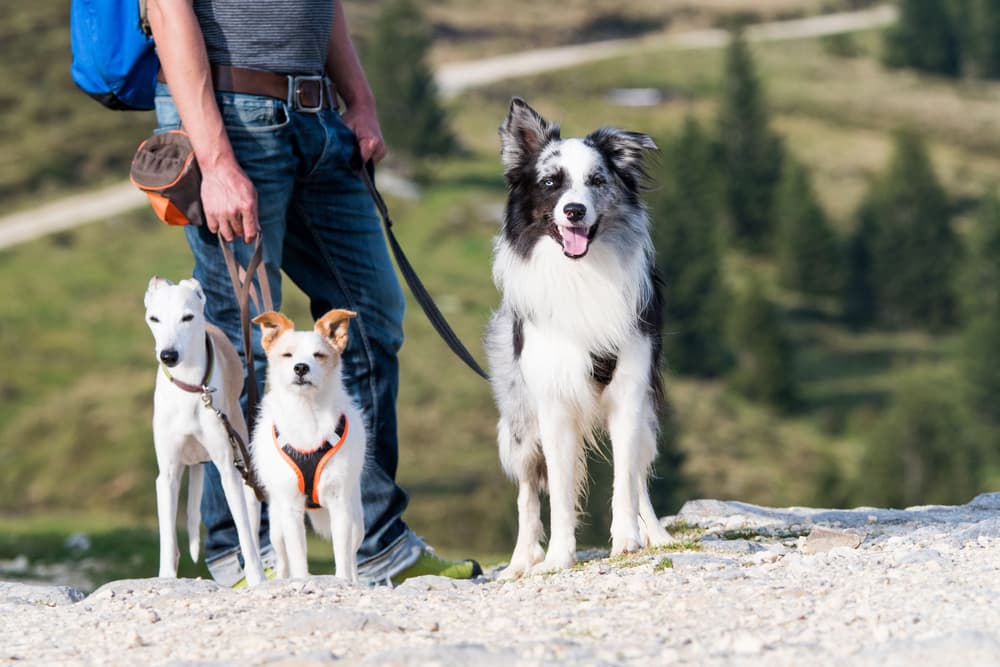
Road trips with your dog should be a fun experience, not a stressful event. To help the whole process go smoothly, follow along with these tips:
Take Test Drives
If the only places your pet has been in the car include the clinic, groomer, or the local dog park, Belio recommends “bringing your dog on long car rides, increasing the amount of time they’re in the car each time.” Test driving ahead of time lets you address any issues your pet may have on longer rides.
Train Your Dog To Love New Places
If your dog isn’t used to visiting new places, Belio suggests bringing him to at least three new locations a week prior to embarking on your journey. “When you get there, bring out your dog’s favorite treats (or toy) and reward them every single time they interact with their environment,” she says. “This way, all of these new things form associations with the things they love.”
Address Anxiety
Pet parents have a few options if their dogs show signs of discomfort or anxiety. “Desensitization, consulting your vet, and using supplements such as CBD oil could help,” says Belio. “For desensitization, work on your dog eating their meals in the car, playing in the car, and going in and out of the car using fun car games.”
Take Frequent Breaks
If you are doing a long road trip with your dog, incorporate frequent breaks (every three to four hours) for pet relief, a short walk, and water. Puppies and senior pets need breaks more often. “I don’t find exercise to be overly important, as the car ride is stimulating enough,” says Belio. “A short walk (under 10 minutes) is enough for your breaks.”
You don’t have to wait until you are ready for a pit stop to allow Fido to drink. Leave a no-spill water bowl by his side so he can drink whenever he’d like.
Provide Stimulation
While you are focused on the drive, use a stuffed toy to keep your active dog stimulated, entertained, and to keep them from gnawing on seatbelts and other items. Belio recommends packing frozen Kongs and safe dog chews. During breaks, play a game of tug or fetch to add exercise to your dog’s day.
Give Your Dog Space
No matter what type of four-wheeler you are using, give your pooch space of his own to be comfortable and decompress. Avoid stuffing items next to him in the back seat or cramming him in the back of the car without much room.

